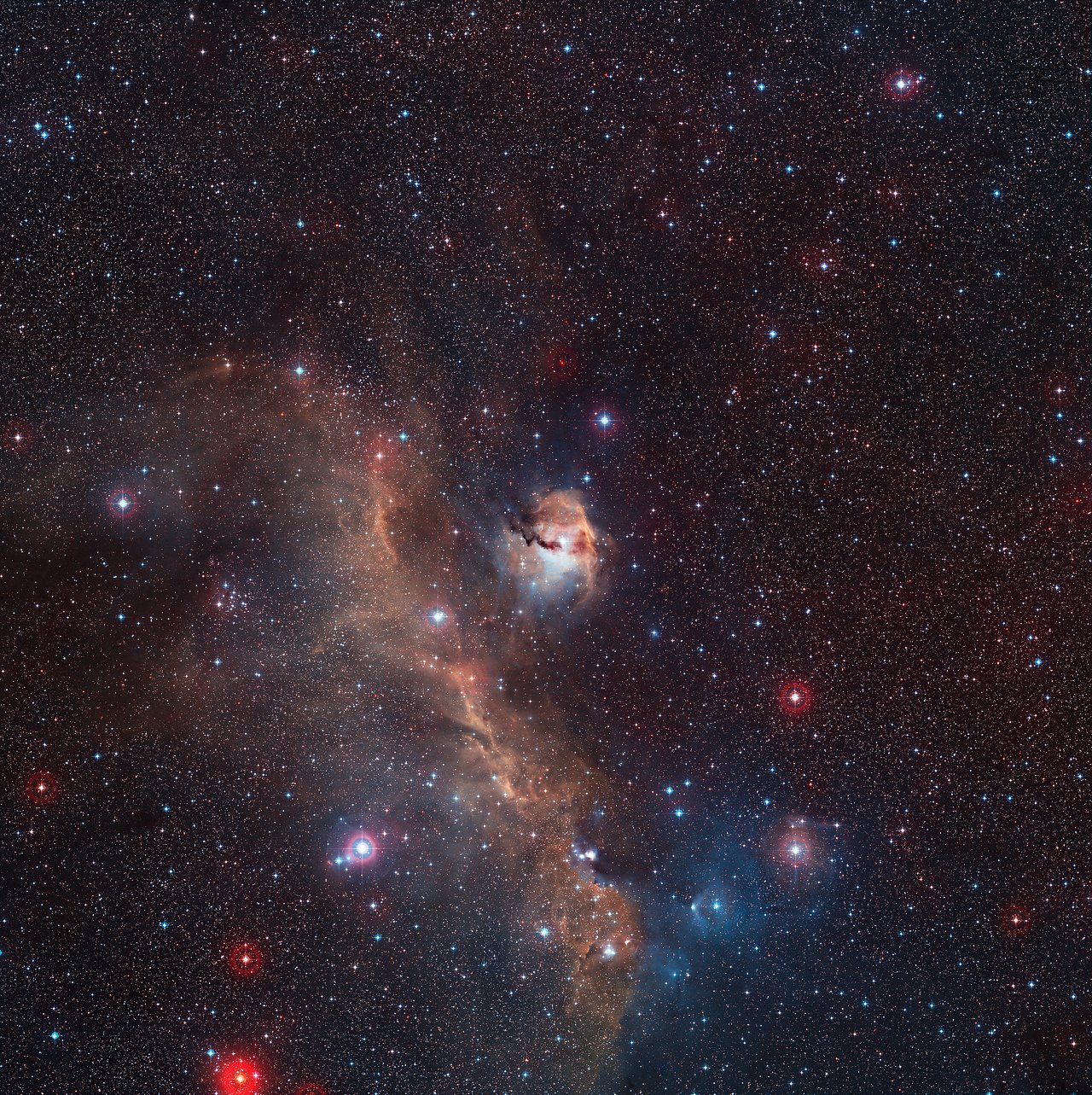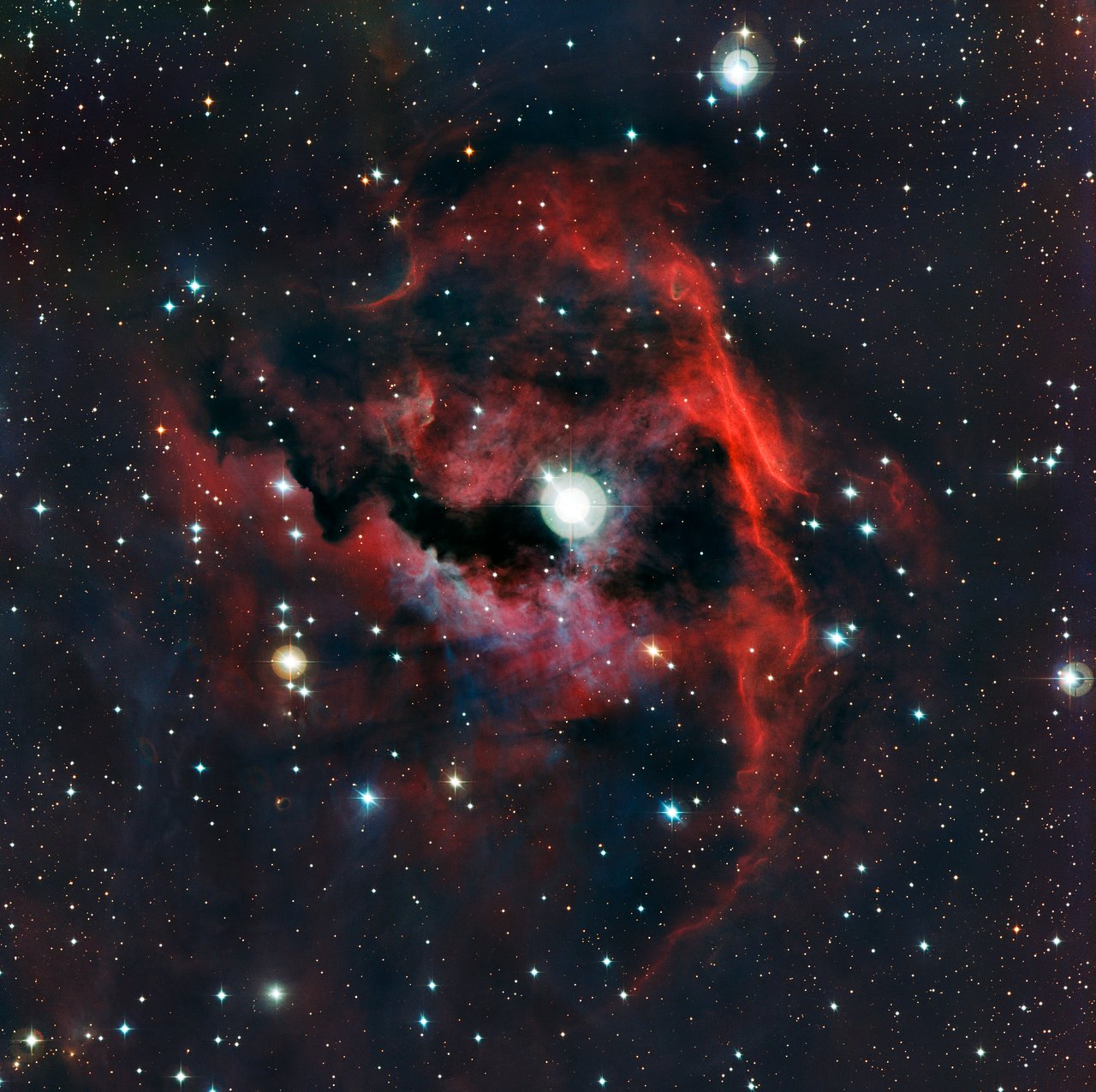Image Credit: ESO/Digitized Sky Survey 2 - Davide De Martin
Seagulls, amazing birds, they make a lot of noise and seem to have an uncanny sense of who makes the best chips.
At the MCG in Melbourne, they soar into the night and catch little insects attracted to the bright stadium lights. They have to be chased away by Eagles trucked in to make sure they don't interfere with the precious television rights of footy broadcasts.
In the IT industry, consultants who swoop in with a special solution right about when money is up for grabs, but don't actually tap into the value created by the long suffering hardworking souls how already know what is required, are often referred to as Seagulls also - but I digress.
Somehow we have connected Seagulls to the idea that they are always out to pinch something, yet they are very cheeky, sociable birds that seem to have a lot to say about everything.
So here's one that will pinch your attention, but fill you with awe, without making a single noise.
Stuart Sharpless was a member of the Naval Academy at Flagstaff station in 1953 and proceeded to catalog over 300 emission nebulae. Many of these are in other catalogs already, the distinguishing features of the entries in Sharpless' 2 catalogs completed by 1959 was that the were all emission nebula that were high in HII - Ionized hydrogen, or as we would say today - Astro-photography paydirt!!!!
The eye of the Seagull is entry SH 2-292 - Sharpless Catalog 2, number 292. The "Eye of the Seagull" is actually part of the much larger Seagull Nebula. It really does look like a seagull.
Image Credit: ESO La Silla 2.2m Telescope
ESO in its 40th Anniversary year, has today released a new stunningly detailed image of the "Eye of the Seagull" taken from its Wide Field Camera on the 2.2m Telescope at La Silla Observatory. This image is perhaps the deepest ever taken of this amazing object, and features an equally stunning video of the object that zooms in from the "whole of sky" milkyway.
"This new image shows the head part of the Seagull Nebula It is just one part of the larger nebula known more formally as IC 2177, which spreads its wings with a span of over 100 light-years and resembles a seagull in flight. This cloud of gas and dust is located about 3700 light-years away from Earth. The Seagull Nebula lies just on the border between the constellations of Monoceros (The Unicorn) and Canis Major (The Great Dog) and is close to Sirius, the brightest star in the night sky. The nebula lies more than four hundred times further away than the famous star. The complex of gas and dust that forms the head of the seagull glows brightly in the sky due to the strong ultraviolet radiation coming mostly from one brilliant young star — HD 53367 [2] — that can be spotted in the centre of the image and could be taken to be the seagull’s eye. The radiation from the young stars causes the surrounding hydrogen gas to glow with a rich red colour and become an HII region. Light from the hot blue-white stars is also scattered off the tiny dust particles in the nebula to create a contrasting blue haze in some parts of the picture."
Image Credit: ESO, IAU and Sky & Telescope
Of course many of you familiar with the AARTScope Blog would remember my previous (seemingly under done by comparison) effort on SH 2-292. I was very happy with it and it is still one of my favorite images today.
Image Credit: Peter Lake - 18Hrs L, Sii, Ha, Oiii in the Hubble Pallet.
So next time you are at the beach trying to eat your fish and chips in peace, or at the football watching them dodge footballs, athletes and eagles - give a thought to IC 2177 / SH2-292 and remember the Seagull that the chips love - CCD chips that is!!!
The year 2012 marks the 50th anniversary of the founding of the European Southern Observatory (ESO). ESO is the foremost intergovernmental astronomy organisation in Europe and the world’s most productive ground-based astronomical observatory by far. It is supported by 15 countries: Austria, Belgium, Brazil, the Czech Republic, Denmark, France, Finland, Germany, Italy, the Netherlands, Portugal, Spain, Sweden, Switzerland and the United Kingdom. ESO carries out an ambitious programme focused on the design, construction and operation of powerful ground-based observing facilities enabling astronomers to make important scientific discoveries. ESO also plays a leading role in promoting and organising cooperation in astronomical research. ESO operates three unique world-class observing sites in Chile: La Silla, Paranal and Chajnantor.






